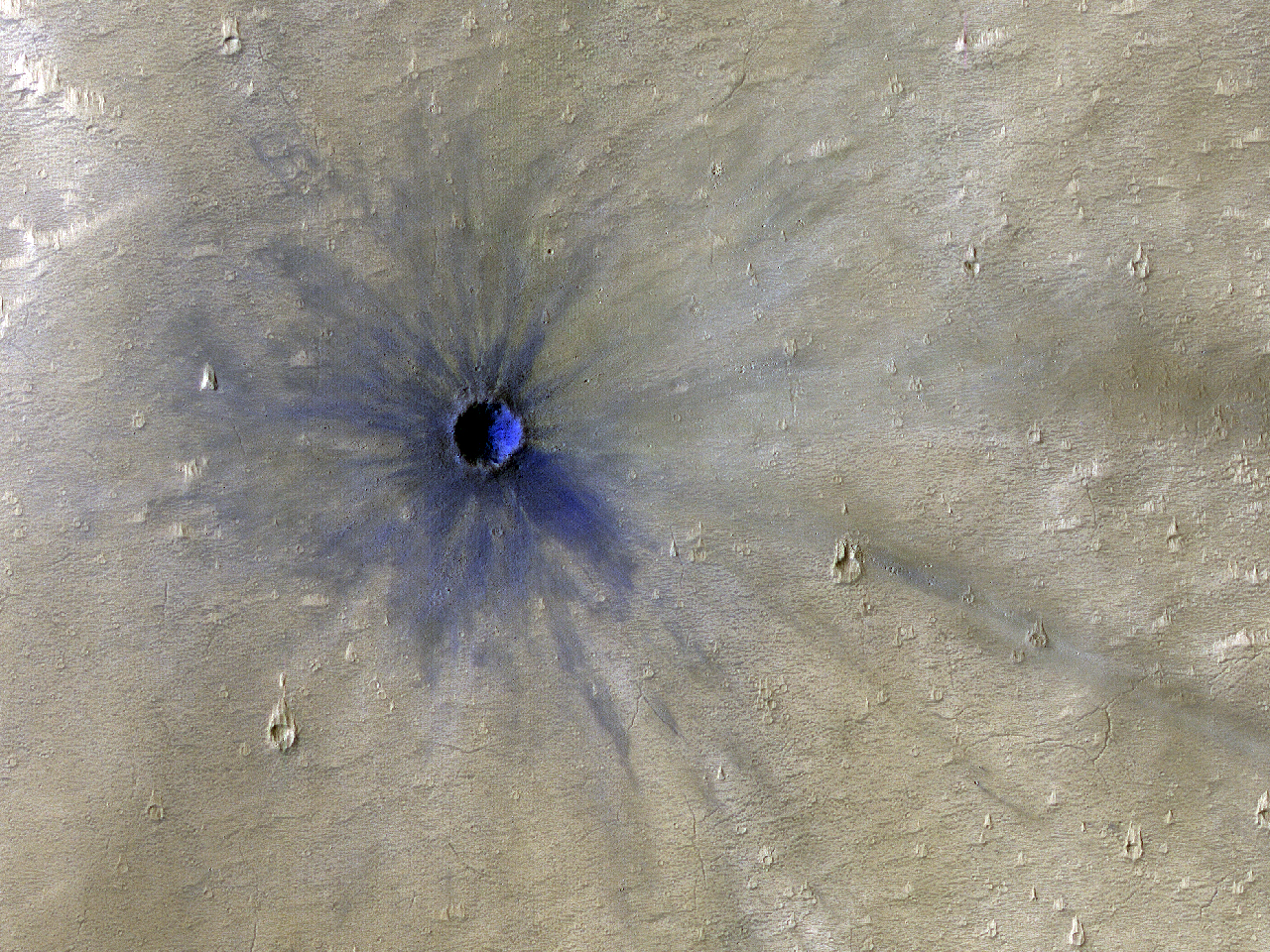Repeat imaging of the same location on Mars allows us to detect changes, including new impacts. This recent crater is known to have formed between February 2005 and July 2005.
Before and
after images enable us to “age” a crater to within a few months or years. HiRISE often confirms the existence of craters identified
in pre-existing lower resolution images.
Incoming impactors form new craters and deposit rock, in what is called an ejecta blanket that is outside the crater. The ejecta blanket resembles a splash pattern when seen from above.
The dark colors in the image show a portion of the blanket, including far-flung small pieces of rock. The blue likely represents dark basaltic rocks, a volcanic rock commonly found in places like Hawaii, on top of the dust-covered surface.
The radial features of the crater are comprised of ejecta and often termed “rays.” Rays are used to help identify more recent craters and find them in images. Older craters do not have rays as they have been eroded away. As is clear from an example like this, impact craters allow us to study the subsurface portions of planetary bodies.
ID:
ESP_011425_1775date: 2 January 2009
altitude: 260 km
https://uahirise.org/hipod/ESP_011425_1775
NASA/JPL-Caltech/University of Arizona
#Mars #science #NASA
